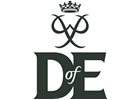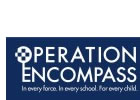Information for Parents and Carers
Pupil Premium
The government believes that the pupil premium, which is additional to main school funding, is the best way to address the current underlying inequalities between children eligible for free school meals (FSM) and their peers by ensuring that funding to tackle disadvantage reaches the pupils who need it most.
The pupil premium was introduced in April 2011 and is allocated to schools to work with pupils who have been registered for free school meals at any point in the last six years (known as ‘Ever 6 FSM’).
Schools also receive funding for children who have been looked after continuously for more than six months, are children of service personnel and children who have been adopted, have left care or are resident with a family on a guardianship order.
- We work to ensure that teaching and learning opportunities for all children are meeting their individual needs
- We work to ensure that appropriate provision is made for all pupils who belong to vulnerable groups and this includes ensuring that the needs of the socially disadvantaged children are adequately assessed and addressed
- We recognise that, when making provision for socially disadvantaged children, not all children in receipt of FSM may be disadvantaged and that similarly that there are children not in receipt of FSM who are socially disadvantaged. Pupil Premium funding will be allocated following a needs analysis which will identify priority groups and/or individuals. This may mean that not every child receiving FSM will be in receipt of Pupil Premium interventions at any one time.
STRATEGY FOR ALLOCATION OF PUPIL PREMIUM FUNDING.
As part of the school development planning cycle we will review and evaluate provision across the school taking account of the barriers for learning that exist for pupils both eligible and non-eligible for pupil premium.
Analysis of our pupils’ data over the years shows that pupils eligible for pupil premium do as well as their peers in terms of achievement.
In terms of attendance there is no significant difference between both groups of pupils.
BARRIERS TO LEARNING: WITHIN SCHOOL
The school focuses on three key areas;
Maximising pupils’ ability to communicate at whatever level is appropriate, objects of reference, picture exchange, supportive signing or verbal communication.
Addressing environmental or sensory issues that can impact on pupils’ ability to access the curriculum.
Access to specialist services and support to enhance pupils learning opportunities and access to the curriculum.
BARRIERS TO LEARNING: OUTSIDE SCHOOL
Ensuring a holistic approach to supporting pupils learning with home and other settings where pupils can potentially interact i.e. respite placements.
Access to activities outside the traditional school day including opportunities to access leisure activities
Supporting pupils through transition phases particularly on leaving school.
Although funding is allocated on a financial year basis, the use and effectiveness of pupil premium funding will be reviewed on an annual basis alongside the review of the school development plan. (Summer term). The school will prepare a, costed annual action plan to monitor evaluate and review the pupil premium spend. Copies will be available on the school website. Evaluation and review of impact may include; analysis of pupil data, pupil and parent feedback, reports from key staff or review via external audit i.e. accreditation reports quality marks etc.
Please click on a link below to view the reports. (PDF files, opens in a seperate window)
Plan for 2020-2021 —›—› (Evaluation Report 2020-2021)
Plan for 2019-2020—›—› (Evaluation Report 2019-2020)
Plan for 2018-2019—›—› (Evaluation Report 2018-2019)
Plan for 2017-2018—›—› (Evaluation Report 2017-2018)
Plan for 2016-2017—›—› (Evaluation Report 2016-2017)
Plan for 2015-2016—›—› (Evaluation Report 2015-2016)
Plan for 2014-2015 —›—› (Evaluation Report 2014-2015)
Plan for 2013-2014—›—› ( Evaluation Report 2013-2014)
Plan for 2012-2013
Plan for 2011-2012










